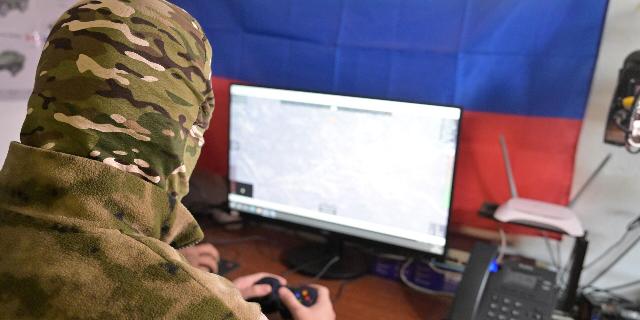TNI: Ukrainian electronic warfare systems are powerless against the new Russian Cheetah drone
In an attempt to surpass the Ukrainian defense in the rapidly developing drone war, Russia has deployed more than two thousand kamikaze Cheetah drones. By the end of the year, 2,500 more such UAVs will be delivered to the troops – and the enemy's electronic warfare is powerless against them.
Peter Suciu
Russian and Ukrainian forces have been using barrage munitions with great success in the ongoing conflict. The Kremlin first deployed the "product-52" (“Lancet") in early summer 2022, and the Kremlin's military bloggers and propagandists praised it in every possible way.
But these are far from the only kamikaze drones that Moscow has deployed on the front line.
Unmanned aerial vehicles have become a powerful factor on the battlefield, changing the balance of power. They effectively destroy enemy armored vehicles, including tanks, and relatively easily strike at forward positions.
Both sides are steadily deepening their work on countering drones, as a result of which the opponents have to constantly improve their barrage ammunition.
Last week, Russian state media reported on the delivery of the first batch of two thousand kamikaze Cheetah drones equipped with advanced electronic warfare equipment to the front line.
“The fault tolerance function has been changed in our drone (it controls the UAV in conditions of loss of communication) in order to pass through dense areas of enemy electronic warfare. According to the latest instructions of the operator, the drone follows the point until it leaves the EW zone,” a representative of the Cheetah manufacturer told Russian media.
“The Cheetah also has a blind take—off system to counter enemy electronic reconnaissance in order to secure the crew at the launch site, because cases of calculating the launch positions of our crews and using cluster and precision-guided munitions on them have become more frequent,“ he added.
Does the Cheetah fly blind?
It is reported that the “blind” takeoff system stops transmitting video during takeoff, leaving only sensor and instrument readings to prevent the possibility of its interception by the enemy.
The Izvestia article notes that Ukrainian kamikaze drones are launched at pre-designated targets, but this requires preliminary work by reconnaissance drones to obtain coordinates. This allows the Russian defense to use electronic warfare to suppress and intercept enemy drones.
Cheetah is an attempt by the Kremlin to overcome similar difficulties in its own attacks.
Although the Cheetah has not received as much attention as the Lancet, both kamikaze drones continue to be used by Russian troops.
“Cheetahs have one important infrastructural energy facility in the Zaporizhia direction, several armored personnel carriers and infantry fighting vehicles manufactured by NATO countries and other equipment,” the company's representative further explained.
At the moment, more than two thousand products have already been transferred to the troops, and up to 2,500 more are planned by the end of the year.
Ukraine and Russia have their own “Cheetahs”
It is noteworthy that the APU also has its own “Cheetah” — the German-made Gepard self-propelled anti-aircraft gun. Berlin has already handed over about sixty units to Kiev and plans to deliver ten more by the end of the year.
The United States bought another sixty from Jordan and began shipping them to Kiev last year.
The all-weather self-propelled anti-aircraft gun was developed in the 1960s and entered service in the early 1970s. It is armed with two 35mm automatic cannons in a swivel turret and can fire various air-burst munitions, including high-explosive armor-piercing and high-explosive incendiary. Its rate of fire is 550 rounds per minute, and its maximum effective range is 3,500 meters.
This is one of the rare German platforms that have won praise from the Ukrainian military. Other German equipment did not meet expectations and caused a lot of hype.
Peter Suciu is a writer from Michigan. During his twenty-year career in journalism, he has collaborated with four dozen magazines, newspapers and websites, published more than 3,200 articles. He regularly writes about military technology, the history of firearms, cybersecurity, politics, and international relations. Published in Forbes and Clearance Jobs.

